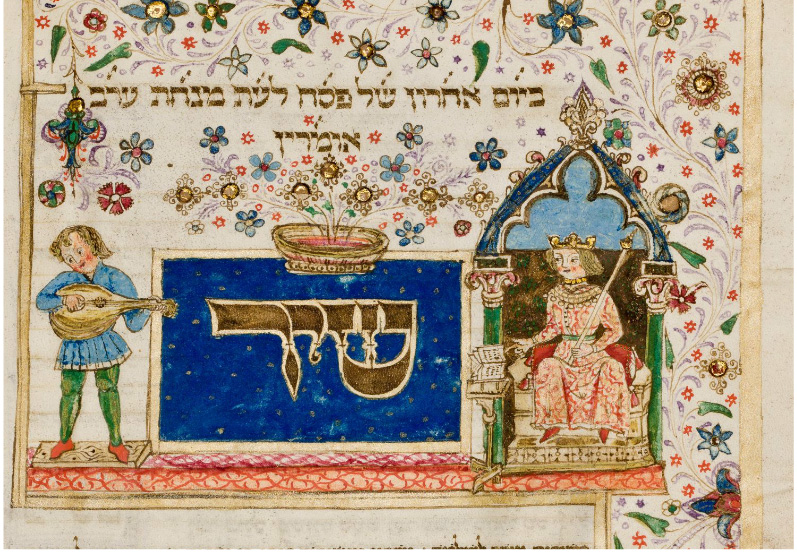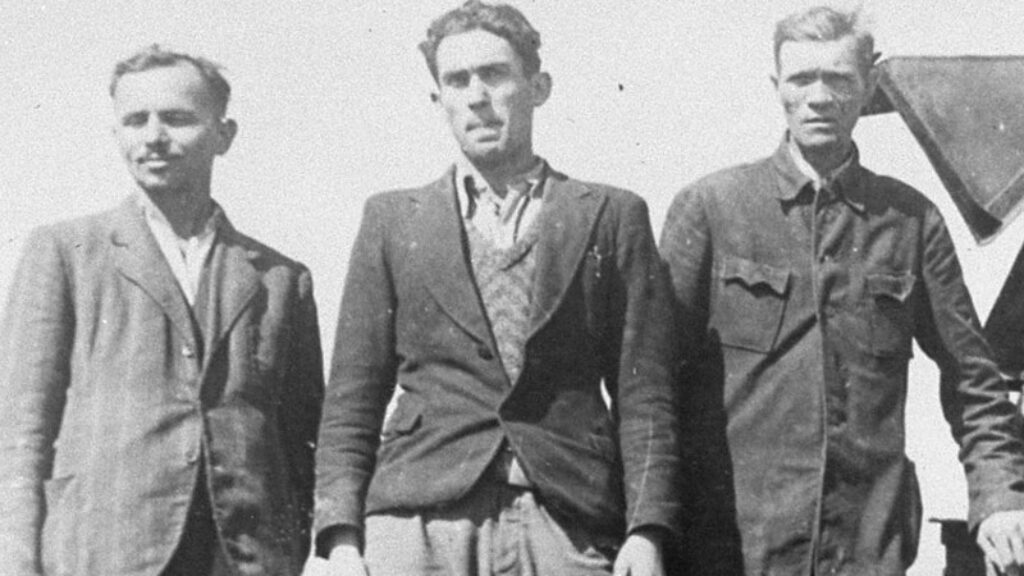Lost in Translation: Song of Songs and Passover
Whose idea was it to read the Song of Songs on Shabbat Chol Hamoed, the Sabbath that falls during the interim days of Passover? Are the extended Shabbat-holiday prayers not long enough? Having grown up in Ashkenazi synagogues, I am used to it—and even enjoy the vivid poetic interlude—but I never fully understood why we do it, and why Sephardim don’t.
Only Ashkenazim read all five megillot in synagogue over the course of the year: Song of Songs on Passover, Ruth on Shavuot, Lamentations on the Ninth of Av, Ecclesiastes on Sukkot, and Esther on Purim. Some of these pairings are obvious and universal. Esther, the source of the Purim story, and Lamentations, which remembers the destruction of the First Temple, are particularly apt for their holidays.
However, Ashkenazim are unique in reading the other three megillot when they do. Megillat Ruth, whose events center around the barley harvest, fits nicely with Shavuot, which is, first of all, a barley harvest festival. The connection of Ecclesiastes and Song of Songs to their designated holidays is much less clear. Ecclesiastes, the cynical and sometimes blasphemous musings of Kohelet, has no clear connection to Sukkot. Song of Songs, a series of love poems set throughout the land of Israel, makes occasional references to springtime but bears no obvious relationship to Passover or the exodus from Egypt. It is almost as if the megillot and holidays were students in biology class and all the other students quickly found their preferred lab partners, leaving the teacher to pair up the strays.
The answer we all know from pulpit sermons, Artscroll, and elsewhere is that the newfound love celebrated by the Song is an allegory for the love between God and Israel, a relationship that began at the Exodus, before being consummated at Sinai. Of course, that leaves us doing exegetical gymnastics to avoid the plain meaning of verses such as Song 1:2: “Oh, give me of the kisses of your mouth / For your love is more delightful than wine,” as well as Song 3:4:
I held him fast, I would not let him go
Till I brought him to my mother’s house,
To the chamber of her who conceived me.
The allegorical approach is lovely and keeps those who understand Hebrew or follow along in translation from being embarrassed by a public reading of impassioned love poetry in shul. But to return to the question with which I began: whose idea was it to read the book in shul? And why don’t Sephardim, who also inherited the allegorical reading, read Song of Songs on Passover?

The earliest written halakhic source linking the Song to Passover comes from Masekhet Soferim, an eighth century extra-talmudic tractate, which discusses reading Song of Songs on the last two nights of Passover. The earliest reference I know of to the current Ashkenazi custom of reciting the Song on Shabbat Chol Hamoed appears in Sefer Minhagim of Rabbi Meir of Rothenberg in the thirteenth century. This is echoed in Moses Isserles’s authoritative Ashkenazi gloss on the Shulchan Arukh. Later halakhic sources struggle to find scriptural connections to Passover in the Song of Songs, but, like our popular sermons, these are justifications, not explanations.
Scholars generally date the Song to the third century BCE, and its frank eroticism made it controversial from the start. Discussions in the Mishnah regarding whether the Song of Songs renders the hands impure (a counter-intuitive sign of sanctity) probably have less to do with canonization, which was essentially settled by then, and more with concern over the apparently profane book’s holiness, as seen in Mishnah Yadayim 3:5:
All sacred writings defile the hands. The Song of Songs and Ecclesiastes defile the hands. Rabbi Judah says: The Song of Songs defiles the hands, and Ecclesiastes is subject to debate. Rabbi Yosi says: Ecclesiastes does not defile the hands, and the Song of Songs is the subject of debate…. Rabbi Akiva said: Heaven forbid that any person from Israel should de-bate whether the Song of Songs defiles the hands, because the entire world was never as worthy as on the day on which the Song of Songs was given to Israel. For all the Writings are holy, but the Song of Songs is the Holy of Holies.
Rabbi Akiva’s full-throated defense of the book suggests that he was already reading the Song allegorically. Doing so resolved both the problem of the its sensuality and the fact that it never mentions God’s name. Shir Hashirim Rabbah, a midrashic collection on the Song written sometime between the sixth and eighth centuries, runs with the allegorical approach, systematically recasting the Song’s two lovers as God and Israel, often connecting individual verses to God’s rescue of Israel from Egypt. However, the influence of Shir Hashirim Rabbah is difficult to measure. Few manuscripts survive, suggesting a modest circulation, and we cannot assume it ever would have gained enough popularity to spark a culture-wide minhag, let alone one that was specifically Ashkenazi.
Enter the Targum Song of Songs, the Aramaic “translation” of the Song. Some targumim, like the relatively well-known Targum Onkelos, offer fairly straightforward Aramaic translations of the underlying biblical text. However, some targumim, especially later ones, are not so much translations as interpretations, often digressing into creative and expansive exegesis.
Targum Song of Songs does exactly that. It seems to have originated in the eighth or ninth century, and adopts the same allegorical approach of the midrash, interpreting sections of the Song as references to the exodus from Egypt. Yet the Targum takes the conceit one step further, being the first source to reimagine the entire Song of Songs (not merely isolated verses) as a history of the relationship between God and Israel as it progresses through distinct eras; from the exodus to the building of Solomon’s Temple; from the Babylonian exile until the building of the Second Temple; and from the Roman destruction of that Temple until the eventual messianic rebuilding of the Third Temple. The biblical Song’s cycles of the lovers’ separation, longing, and reunification become the Targum’s cycles of exile and redemption that permeate Jewish history. The Targum explicitly connects the Song to the national redemption that began with the exodus of the Jewish people from slavery, into the welcoming embrace of God.
For example, Song 1:4 reads, “Draw me after you, we will run; the king has brought me to his chambers / We will rejoice and be glad with you / We will appreciate your beloved more than wine / Like new wine they loved you.” The Targum renders the same verse as follows:
When the people of the house of Israel left Egypt, the divine presence of the Master of the world led the way before them in a pillar of cloud in the day and in a pillar of fire in the night; the righteous of that generation said: Master of the entire world, draw us after You, and we will run after the path of Your goodness; and bring us to the foot of Mt. Sinai, and give us Your Torah from Your heavenly treasury; and we will rejoice and be glad in the 22 letters with which it is written, and we will remember them and will love Your godliness; and we will resist following after the idols of the nations; and all the righteous that serve and are right before You will be fearful of You and will love Your commandments.
Here you can see traces of original verse holding up the Targum like scaffolding. “Draw me after you, we will run” transforms from lovers seeking each other out to the Israelites seeking out God and His commandments. The Targum has reconstructed its source material to retell the story of the exodus from Egypt.
In contrast to Shir Hashirim Rabbah, the Targum Song of Songs was popular, as evidenced by the relatively large number of manuscripts that survive today. The targumim were used in synagogues beginning in late antiquity and into the Middle Ages, even after Aramaic was no longer the common language. The legacy of Targum Song of Songs was further cemented when the great Ashkenazi authority Rashi based his commentary on the Song of Songs almost entirely on the Targum’s elaborate allegorical reading.
That same legacy now brings us Artscroll’s determinedly allegorical translation of Song of Songs, which sanitizes the sensuality by faithfully following Rashi’s interpretation. Thus where the Jewish Publication Society’s translation of verse 1:13 says “My beloved to me is a bag of myrrh / Lodged between my breasts,” the Artscroll has “But my Beloved responded with a bundle of myrrh, the fragrant atonement of erecting a Tabernacle where His Presence would dwell between the Holy Ark’s staves.” The liberties taken are liberal, and the centuries-old allegories are strictly upheld.
The popularity of Targum Song of Songs, especially in the lands of Ashkenaz, is, I believe, the source of the unique Ashkenazi association between the Song and Passover. The use of the targum into the late Middle Ages brings us tantalizingly close to Rabbi Meir of Rothenberg’s thirteenth century description of the Ashkenazi practice of reading the Song during the intermediate Shabbat of the festival.
Thanks to the Targum, Ashkenazim didn’t just read the Song of Songs as a generalized love allegory, but as the story of Israel’s repeated exile and redemption, starting with the redemption from exile and bondage in Egypt. The Targum’s elaborate historical allegory made Song of Songs the perfect Passover reading for Ashkenazim. And as they sat in shul all those centuries ago, they could hear the Song of Songs, and feel hope for the final redemption.
Comments
You must log in to comment Log In
Suggested Reading

Come Here to Me, You Fortunate Citizen of the World
Zalmen Gradowski’s testimony makes the sadism of the Nazi enterprise painfully clear. That seems obvious, but it runs counter to most Holocaust education.

The Mayor and the Massena Blood Libel
When State Trooper Corporal H. M. “Mickey” McCann asked if it was true that Jews offered human sacrifices on holy days, the diminutive rabbi responded with a tongue-lashing that may have reminded McCann, a veteran of the Great War, of his drill sergeant.
God and Idolatry
Saving God may look Maimonidean on the surface, but Rambam would never agree with Johnston's basic conclusions.
It’s Complicated
Isaiah Berlin's influential liberalism is partly explained by his Zionism.
JJ Gross
In the yeshivish world when one wishes to totally invalidate something or someone they say "I'm not goireiss that" thereby rendering it void from the get go. It would behoove Sheila Tuller Keiter to refuse to even be 'goireiss' the Artscroll edition of Shir Hashirim which buries the literal translation so that only the allegorical one is given as the real one. Indeed in its introduction, if one bothers to go there, they are quite honest about their total rejection of the literal text. This flies in the face of Rava's dictum אין מקרא יוצא מידי פשוטו – the literal meaning of Scri[ture is inviolate. After that the midrashic flights off fancy can follow. Of course the very idea that a metaphor for something sublime can itself be disgusting is something only Artscroll can come up with. Elsewhere their prudish and ham-fisted fundamentalism will have them translating נשים זונות (harlots) in the judgement of Solomon as "innkeepers", by playing fast and loose with Targum Yonatan who translates this as נשים פונדקאיות i.e. "women of the caravanseries", because then, as now, prostitutes plied their trade where the truckers congregated for the night. Artscroll publications are never intended to be scholarly, precise or honest. The company has an agenda, to push a very specific and narrow hashkafa to a captive audience. Their translations of text, their hagiographies of rabbis, or the sloppy legends in their so-called history series should be something no serious writer should be goireiss. Ever.